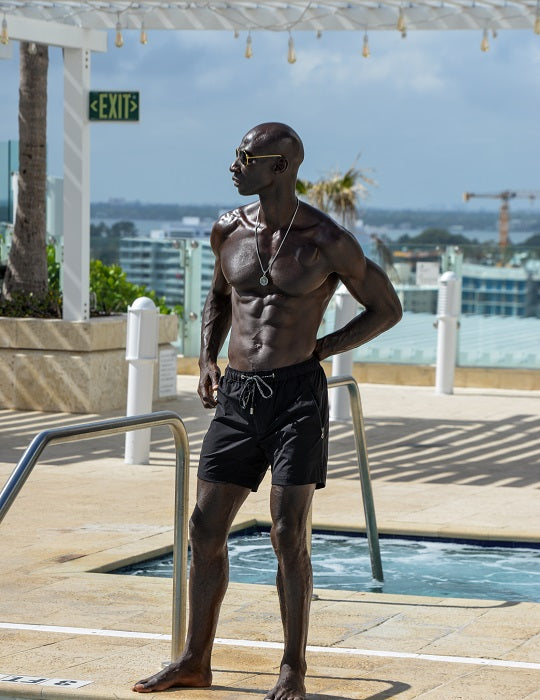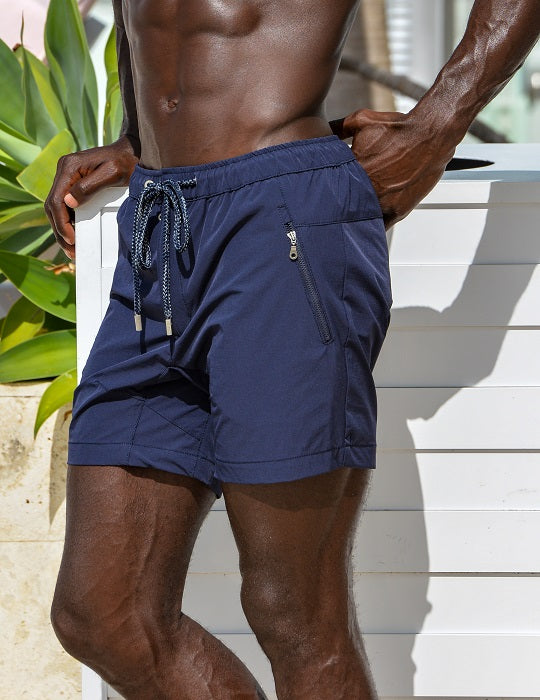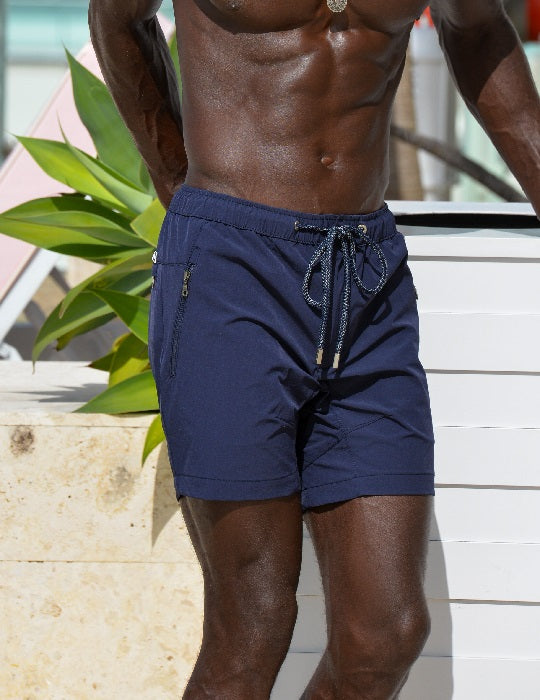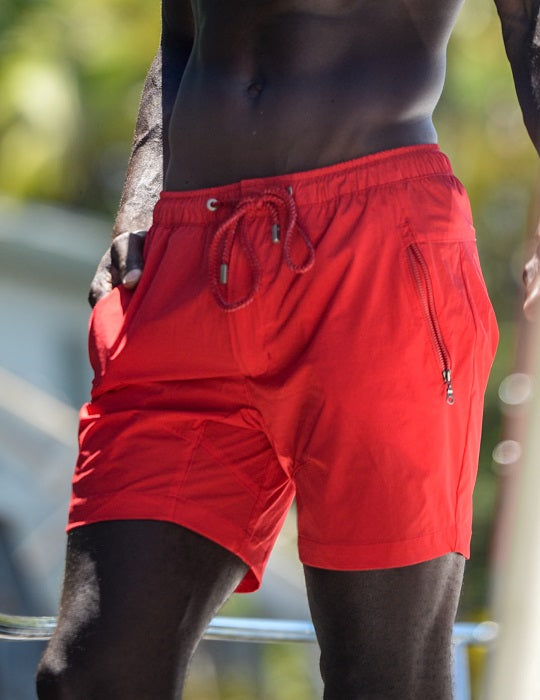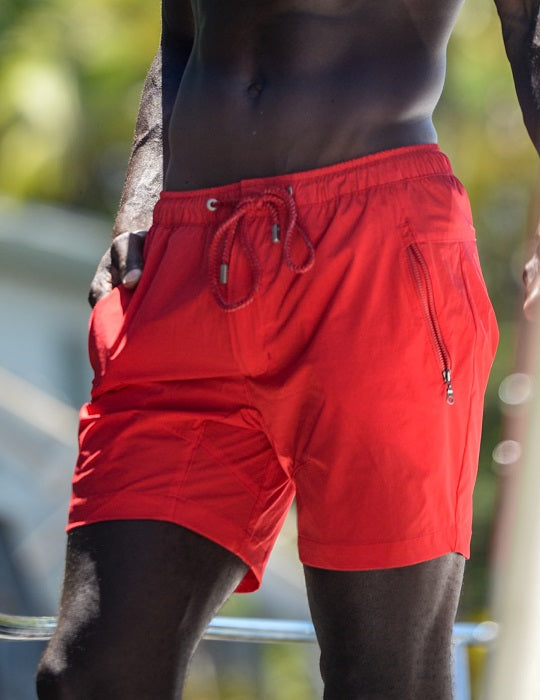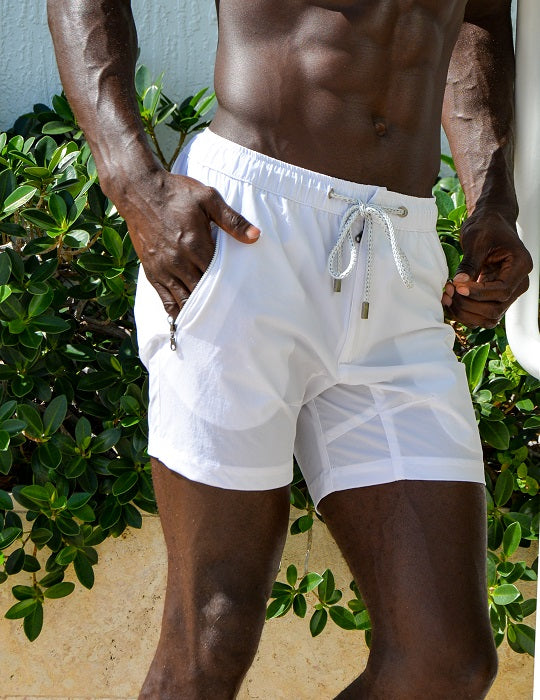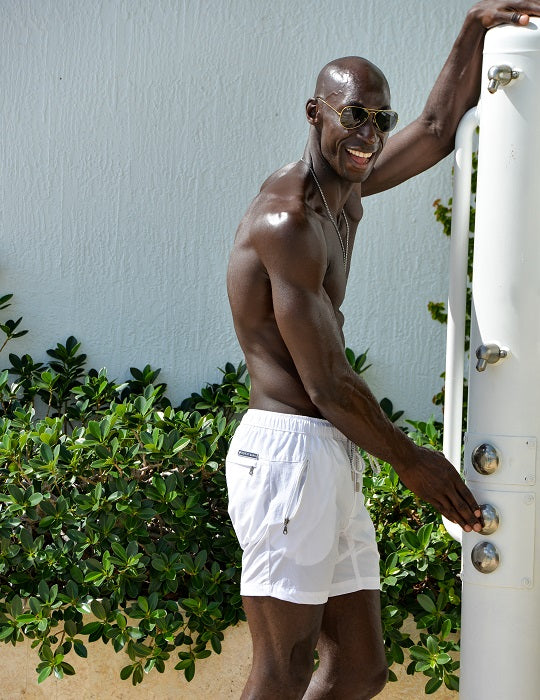
Linen vs Cotton (and Blends): Best for Summer, Travel & Work

- What Are the Fabrics?
- Performance: Head-to-Head
- Best Picks by Use Case
- Fit & Styling
- Care & Packing Tips
- Pros & Cons
- FAQs
- Conclusion
What Are the Fabrics?
Linen
Linen is made from the flax plant, and its natural structure is what gives it that cool, crisp feel. The fibers are hollow, which allows air to flow freely. That’s why linen always feels fresh, even in heavy humidity. It also conducts heat very poorly, meaning it stays cool to the touch.
Visually, linen has a bit of texture - those tiny slubs and irregularities you see in the weave. That’s part of its charm. It starts off crisp but softens beautifully with wear and washing, becoming almost buttery over time. Historically, linen has been a staple in tropical and Mediterranean wardrobes for exactly these reasons.
Cotton
Cotton comes from the soft bolls of the cotton plant. It’s smooth, naturally soft and more structured than linen. From Oxford shirts to poplins to jerseys, cotton covers a wide spectrum - casual to formal, lightweight to heavyweight.
Cotton’s comfort factor is hard to beat. It’s what most of us grew up wearing, and it’s incredibly easy to care for. While it may not stay as cool as linen in tropical humidity, certain cotton weaves - like poplin or seersucker - can still be great in warm weather.
Linen - Cotton Blends
Blends usually combine about 30–70% linen with cotton. The result: shirts that breathe well, feel soft and wrinkle less than pure linen. They’re smoother to touch, easier to pack and tend to have a cleaner drape.
You get the coolness of linen without the full-time commitment of steaming out wrinkles. For most people, blends hit that perfect middle ground, especially for travel.
Performance: Head-to-Head
Breathability & Cooling
Linen leads this category by a mile. The hollow fibers allow air to move freely and keep your body cool. Even in sticky, humid weather, linen helps your skin breathe and your body temperature to stay low.
Cotton is still breathable, but it tends to retain a bit more warmth. Blends sit comfortably in the middle. They’re almost as breathable as linen, but a bit smoother and easier to manage. Interestingly, a long-sleeve linen shirt can actually feel cooler than a short-sleeve cotton one, thanks to the airflow through the weave and its ability to wick away moisture.
Best for hot and humid weather: Linen.
Moisture Management
Cotton absorbs slightly more moisture than linen. But linen wicks and releases that moisture faster, which is why it rarely feels sticky or damp.
Cotton, especially in high humidity, can cling to the skin when wet. That’s why linen tends to feel drier and fresher through long, hot days.
Best for sweat and humidity: Linen
Feel & Texture
Linen is crisp and gets softer with every wash, developing a lived-in comfort that feels effortless. It has texture - that subtle, natural irregularity that makes it visually interesting and tactilely rich.
Cotton, on the other hand, is smooth from day one. It’s flexible and slightly stretchy by nature, which makes it easier to tailor into structured shapes like formal shirts.
Blends take the best of both - the light texture of linen with the smooth finish of cotton. If you like the idea of linen but want something a bit softer or dressier, blends are a great call.
Appearance & Printability
Linen’s texture diffuses printed designs slightly, softening edges and reducing sharpness. That’s why linen is more common for solid colors or washed-out, natural tones.
Cotton, with its smoother surface, holds patterns and prints with precision and vibrancy. It’s perfect for detailed designs or bold prints. So if you’re after sharp stripes, checks or statement prints, cotton’s the better canvas.
Care & Maintenance
Linen needs a little extra care - wash it gently in cool water, skip the dryer and hang it up to dry naturally. A quick steam or iron brings it back to life.
Cotton is low-maintenance: machine wash, tumble dry, and you’re good.
Blends are the easiest of all. They handle regular machine cycles and need minimal pressing. If you travel often, they’re the most practical.
Durability & Longevity
Linen is surprisingly strong. Stronger than cotton and more resistant to pilling. It softens with use without losing integrity, which is why a good linen shirt can last for years, even decades, if cared for properly.
Cotton is durable but may thin out in high-friction areas over time. Blends tend to hold their shape longer and resist wear, combining linen’s toughness with cotton’s flexibility.
With proper care, linen can easily outlast cotton.
Hypoallergenic & Hygiene
Both cotton and linen are hypoallergenic, but linen takes a slight edge here. Its looser weave traps less dust and bacteria, and it’s naturally antimicrobial. Meaning, it stays fresher longer between washes.
That makes linen and blends especially good for travel or humid climates, where you might wear the same shirt more than once before washing.
Sustainability
Linen is one of the most sustainable fabrics you can wear. It uses very little water, requires minimal pesticides and grows well even in poor soil. The entire plant is used in production, and it’s fully biodegradable.
Cotton has a wider environmental footprint. It uses more water and chemicals unless it’s organically grown.
Price
Linen sits in the mid-to-high range because of how labour-intensive it is to produce and process. Cotton covers the widest range, from affordable basics to premium shirting fabrics. Blends usually land in the middle, offering strong value for performance.
Weave & Weight: The Hidden Factor
Fabric type isn’t the only thing that affects comfort. Weave and weight matter just as much.
- Poplin: smooth and lightweight; great for warm offices or mild heat.
- Oxford: structured with a matte finish; perfect for smart-casual looks.
- Twill: more wrinkle-resistant; drapes nicely for workwear.
- Seersucker: puckered surface allows air circulation; perfect for hot days.
- Linen weaves: open and airy; the ultimate summer option.
A lightweight cotton poplin can actually outperform heavy linen on a mild day. So always check both the fiber and the weave when choosing your shirt.
Best Picks by Use Case
For Hot Weather and the Tropics
Best pick: Linen
When the temperature climbs and humidity kicks in, nothing beats linen. The hollow fibers and open weave allow air to circulate freely, keeping you cooler for longer. It dries fast, resists cling and feels light even in sticky climates.
For Travel
Best pick: Linen-Cotton Blends
If you want a shirt that still looks fresh after hours in a suitcase, blends are the way to go. They wrinkle less, breathe well and can be revived with a quick steam or hung in the bathroom.
For Business Casual and Work
Best pick: Cotton
Crisp, smooth and structured - cotton is the classic choice for offices and meetings. It layers well under blazers or jackets and gives a polished, professional drape.
For Resort and Leisure
Best pick: Linen
Laid-back, breathable, and effortlessly refined, linen was made for holidays. Whether you’re lounging poolside or heading to dinner by the beach, it delivers that relaxed elegance you just can’t fake.
For Sensitive Skin
Best pick: High-Quality Cotton or Linen
Both fabrics are soft, natural, and hypoallergenic. Cotton offers that gentle smoothness you can wear all day, while linen adds breathability without irritation.
Fit & Styling
Linen works best in slightly relaxed silhouettes that let the fabric move and breathe. The wrinkles are part of the aesthetic. They signal ease and confidence.
Cotton suits sharper, more structured fits - think tailored shirts or officewear.
Blends adapt easily. They look put-together but still feel comfortable throughout the day.
Care & Packing Tips
- Linen: Roll instead of folding to reduce deep creases. Hang it up when you arrive, and a quick steam will bring it back to form.
- Cotton: Packs easily; just fold neatly and you’re ready to go.
Pros & Cons
| Fabric | Pros | Cons |
|---|---|---|
| Linen | Linen is hands-down the coolest fabric you can wear in hot or humid weather. It also dries fast, resists odor and actually gets softer and more comfortable with every wash and is one of the few fabrics that genuinely improves with age. Over that, it’s naturally strong and long-lasting, making it a smart investment if you take care of it properly. | The one trade-off with linen is wrinkles. They show up fast, especially when you sit or pack, but they’re also part of the fabric’s easygoing charm. If you prefer a crisp, pressed look, linen can feel a little too relaxed. It’s also on the pricier side because producing high-quality flax fiber is labour-intensive. The good news: its durability usually makes up for the higher upfront cost. |
| Cotton | Cotton is the all-rounder of the fabric world: soft, breathable and easy to live in. It’s comfortable from the very first wear, doesn’t demand much care and works effortlessly across dress codes. It’s also widely available and comes in almost every color, weave, and finish imaginable. | In very humid weather, cotton tends to hold onto moisture, which can make it feel heavy or slightly clammy. Cheap cotton can lose shape or fade quickly, while a premium one can last for years. So, it’s worth paying attention to the weave type and fabric weight when buying. |
FAQs
Is cotton better for humid weather?
Not really. Cotton performs well in dry heat, but when humidity rises, it tends to trap moisture and cling to the skin. Linen, on the other hand, wicks sweat away and dries faster, keeping you feeling fresh. Its loose weave allows better airflow, so even in sticky climates, linen feels cooler and less stuffy than cotton.
Do linen shirts lose shape?
No. In fact, linen holds its structure quite well. Its natural stiffness gives it a relaxed drape that doesn’t collapse easily. Over time, it softens while retaining that same light structure. If you prefer a sharper, more fitted look, a linen–cotton blend adds a little shape retention and reduces the lived-in creasing without losing breathability.
Why is linen more expensive?
Linen comes from the flax plant, which requires more care to grow and harvest than cotton. The fibers are extracted through a slow, manual process called retting, which is labour-intensive. But linen’s longevity justifies the cost - a good linen shirt can easily last years longer than cotton. It also softens with age instead of wearing out, so it often feels better the more you wear it.
Can linen be worn for work or formal occasions?
Absolutely. The key lies in the styling. A linen shirt in a tailored cut, especially in neutral tones like white, navy or beige, can look sharp under a blazer or lightweight suit. For a more polished finish, go for high-quality linen or a linen-cotton blend, which gives you that structured look without the stiffness of traditional dress shirts. The natural texture also adds quiet sophistication, perfect for business-casual or summer events.
Do linen and cotton shrink after washing?
Both fabrics can shrink slightly after the first wash, but it’s manageable with proper care. Always wash in cool or lukewarm water and avoid high-heat drying. Linen tends to tighten a bit, then relax again with wear. Cotton is more sensitive to heat, so tumble drying can cause more shrinkage over time. If you’re concerned, look for pre-washed or pre-shrunk fabrics, they’re designed to hold their shape.
Which fabric is more sustainable - linen or cotton?
Linen is generally more sustainable. It’s made from flax, which grows quickly, uses minimal water, and needs almost no pesticides. The entire plant can be used, and the fabric is fully biodegradable. Cotton, unless organically grown, typically has a higher water footprint and may require more chemical treatment.
Conclusion
There's no single “winner” between linen and cotton. It's choosing the right fabric for the moment.
If you’re chasing cool comfort in humid weather, linen is unbeatable. For a sharp, all-rounder you can wear anywhere from meetings to weekends, cotton is your best bet. The beauty of these fabrics lies in their differences. Linen brings an effortless, lived-in ease. Cotton delivers structure and softness. Blends meet you in the middle - adaptable, practical, and easy to care for.
So instead of asking which fabric is “better,” think about where you’re wearing it and how you want to feel.
Easy, cool or classic? Your perfect shirt starts there.


